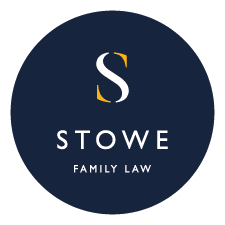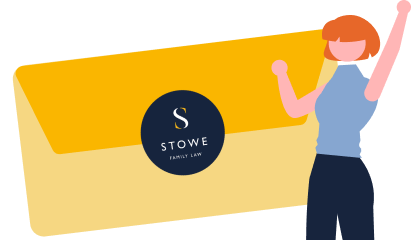Understanding coercive control: The difference between a healthy relationship and an abusive one isn’t always noticeable – especially when the lasting impact isn’t as visible as a bruise.
But abuse is not always physical and mental abuse is just as damaging.
We asked, Luisa Williams, CEO & Founder from My Family Psychologist, to join us on the blog to share her advice on understanding coercive control and how to spot the signs in your relationship.
Coercive control has been defined as:
“Domestic abuse isn’t always physical. Coercive control is an act or a pattern of acts of assault, threats, humiliation and intimidation or other abuse that is used to harm, punish, or frighten their victim.”
Women’s Aid (2020)
OR
“a purposeful pattern of behaviour which takes place over time in order for one individual to exert power, control or coercion over another”
(Home Office, 2013).
And it is, sadly, too common.
- 17,616 offences of coercive control were recorded by the police in the year ending March 2019, compared with 9,053 in the year ending March 2018. (ONS, 2019).
- 1,177 offences of coercive and controlling behaviour in an intimate or family relationship where a prosecution commenced in the year ending March 2019.
- A study by Barlow et al., 2018 identified that common abusive behaviours included coercive control, 63% of coercive control case featured physical violence.
So, what are the signs of coercive control?
Coercive control describes someone’s need for total emotional control over their partner, and it’s often gained through subtle or sneaky tactics.
Here are the top 8 signs to look out for:
-
Isolating you from your friends or family
-
Depriving your basic needs
-
Monitoring your time
-
Monitoring any form of communication you may have
-
Controlling your everyday life such as where you go, what you wear and who you see
-
Depriving you of medical services,
-
Controlling your money
-
Degrading and humiliating you repeatedly
Is coercive control a crime?
Absolutely yes!
On the 25th December 2015, we saw the introduction of the Serious Crime Act which created an offence which made controlling or coercive behaviour in an intimate or family relationship where the behaviour has a serious effect on the victim a criminal offence.
However, coercive control is a relatively new crime and still widely misunderstood. In fact, many people in a relationship subject to coercive control do not recognise that it is a crime and that it should be reported (Stark, 2013).
In the same research, Stark emphasises that a victim of coercive control may become and feel captive in an unrealistic world; leaving the victim to feel trapped with confusion and fear.
These toxic relationships often start with love bombing (an attempt to influence a person by demonstrations of attention and affection) and charm to draw the victim in.
Once into the relationship and the victim is emotionally invested, gaslighting is a common technique used, as part of coercively controlling behaviour, to erode the victim’s sense of self, confidence and self-esteem.
So, what is gaslighting?
Gaslighting is a dangerously subtle form of one-to-one control; often so much harder to spot because it wears the charming face of your friend, lover, colleague or relation – and it’ll tell you it only wants the best for you.
Gaslighting refers to convincing someone they’re wrong about something when they are not. This includes frequently disagreeing with someone and refusing to listen to their point of view.
Refusing to hear what your partner has to say- even if they are in the RIGHT is also gaslighting, which shows an unwillingness to be proven wrong. (Relate, 2020).
Gaslighting can also be used deliberately as a form of control.
What are the effects of gaslighting?
Gaslighting can be a real form of abuse when it is done repeatedly over a long period of time and has far-reaching emotional effects including,
- Making someone doubt their ideas and even question their sanity.
- Negatively affect a person’s confidence and self-esteem.
Is gaslighting dangerous?
Yes, Yes, Yes….. it undermines a person sense of self-belief, leads to them feeling insecure or less confident and they then believe they must be in the wrong if they are being told so.
Need some help and support regarding coercive control or gaslighting
If you feel like you’re dealing with a relationship where there’s coercive control, it’s time to start considering your options.
For some people talking to your partner about making a few changes to bring more balance into your relationship can help, particularly if they did not realise they were toxic.
However, in some relationships, this approach will not work and if you are looking to leave the relationship, reach out to a friend, family member, or professional for help.
Get in touch
If you need help and support on understanding coercive control, then please don’t hesitate to get in touch with My Family Psychologist.
We offer specialised counselling services for adults, couples and children as well as mediation services.
Visit the My Family Psychologist website here or call us on 07801 079555 and discover how we can help.
Family law advice
If you in an abusive relationship and would like any advice on domestic abuse and your legal situation, please do contact our Client Services Team to speak to one of our specialist domestic abuse lawyers here.
Helpful contacts
National Domestic Violence Helpline – 0808 2000 247
The Men’s Advice Line, for male domestic abuse survivors – 0808 801 0327
The Mix, free information and support for under 25s in the UK – 0808 808 4994
National LGBT+ Domestic Abuse Helpline – 0800 999 5428
Samaritans (24/7 service) – 116 123
References
Barlow, C., Walklate, S., Johnson, K., Humphreys, L. and Kirby, S. (2018) Police responses to coercive control. Published online: N8 Policing Research Partnership (156 of the cases studies were listed as S.76 coercive control offences, the data studied were from January 2016-June 2017.)
Myhill, A. (2015) ‘Measuring coercive control: what can we learn from national population surveys?’ Violence Against Women. 21(3), pp. 355-375
Office for National Statistics (ONS). (2019) Domestic abuse in England and Wales: year ending March 2019. Published online: ONS
Stark, E. (2013). The Dangers of Dangerousness Assessment. Family & Intimate Partner Violence Quarterly, 6(2).



I tried to call but whoever’s hacked my phone has put it as XX who’s calling to prevent me from getting help. Also I’ve been cut off from support from most who are meant to as they are the ones causing the abuse due to them using their position and numbers to…I don’t know what but I’ve never ever been treated so badly by people in my life. They laugh when they hurt me and I don’t even know who they are.
I am very sorry to hear of your situation. I have passed your details to our Client Care team. In the meantime, you can access a range of different support contact details here: https://www.stowefamilylaw.co.uk/family-law/domestic-abuse-solicitors/support-with-domestic-abuse/